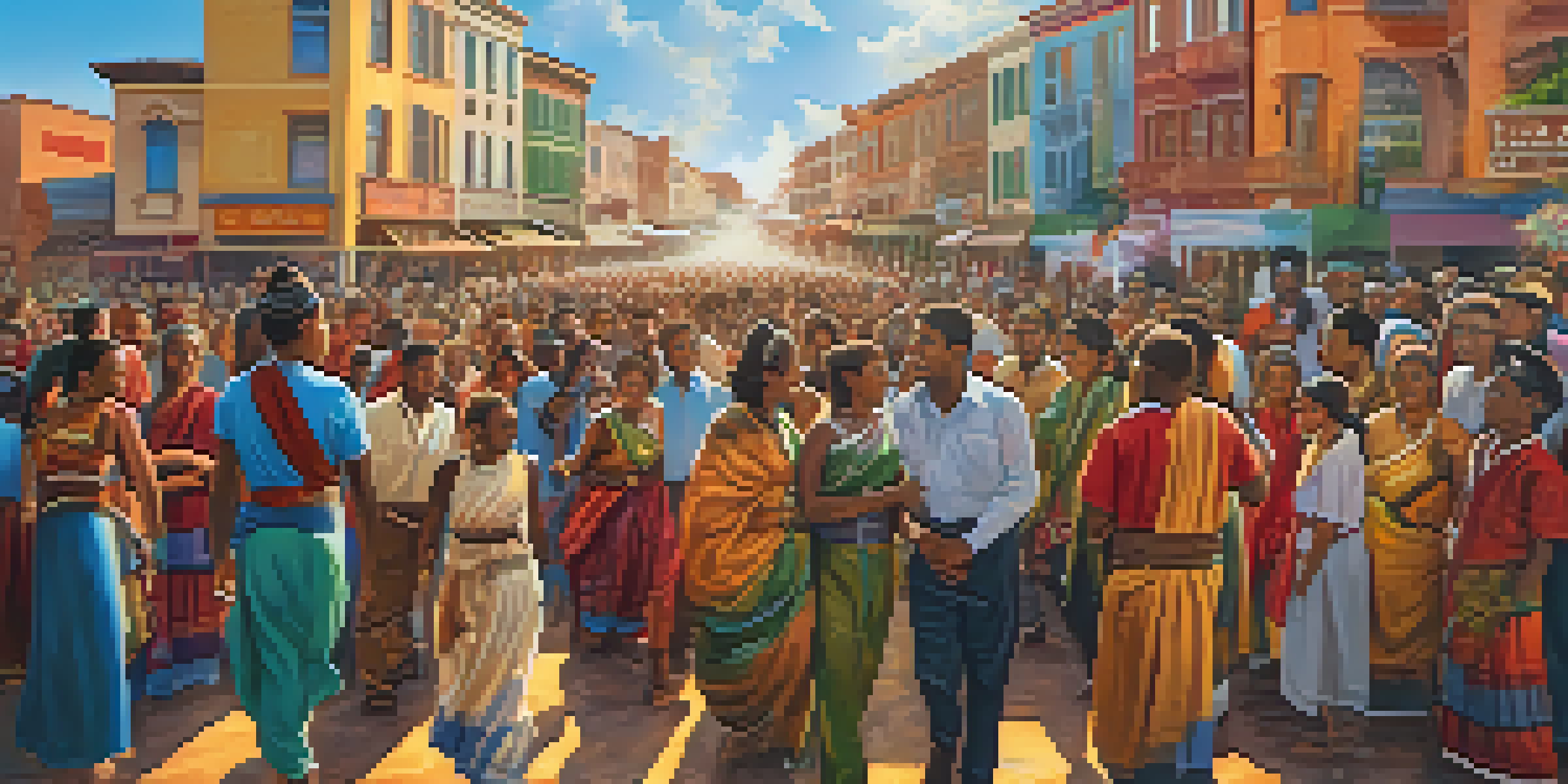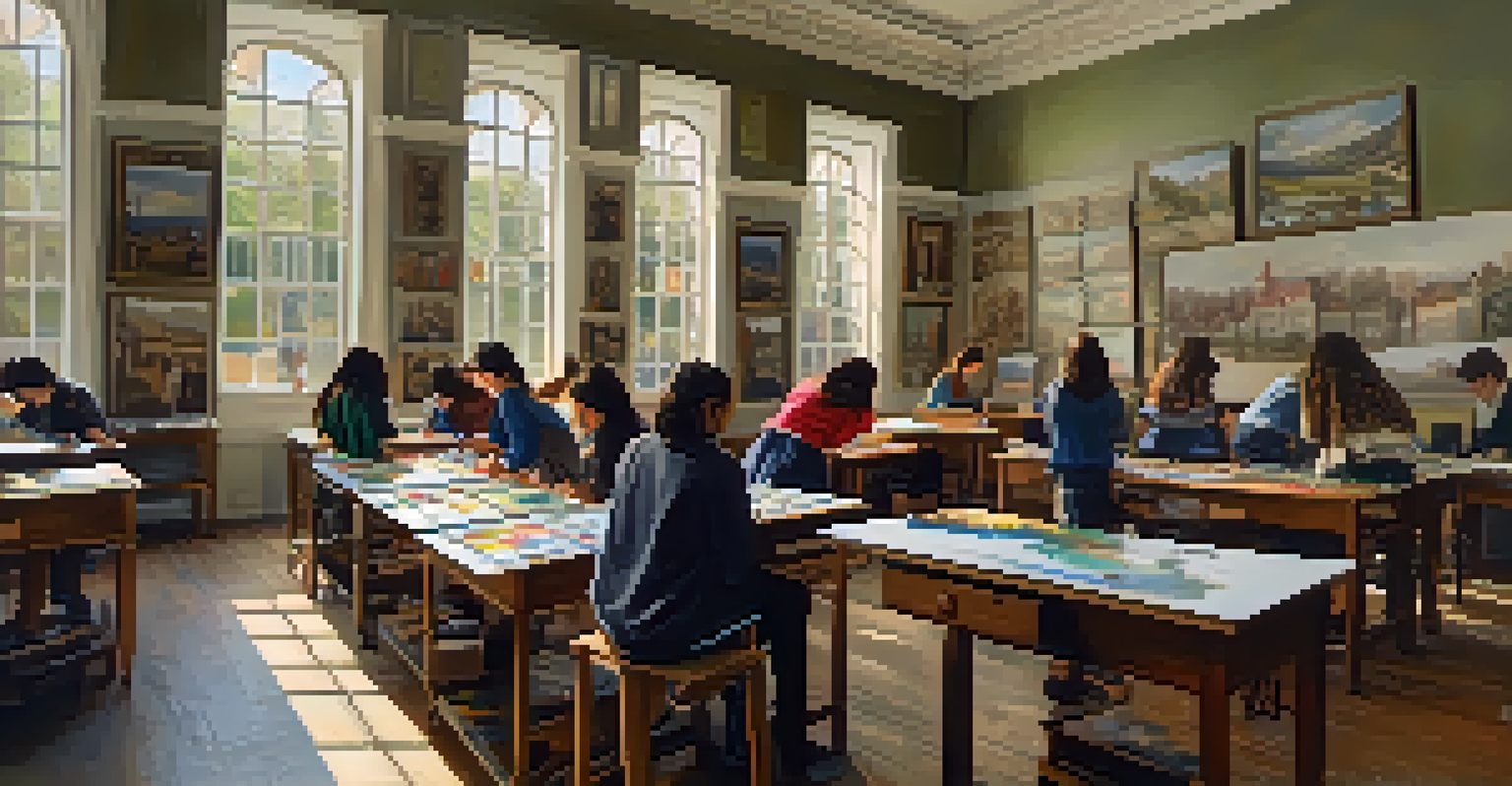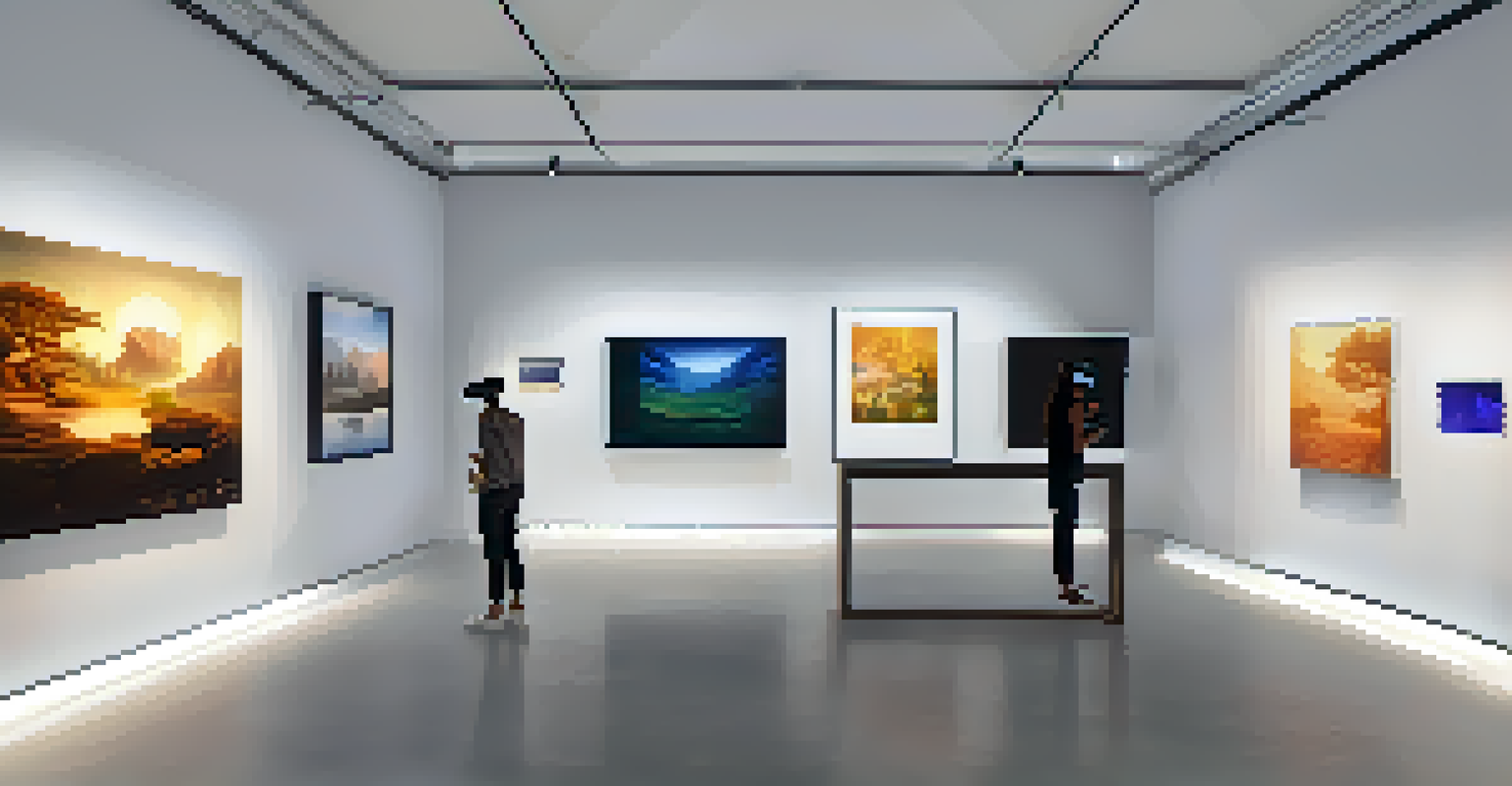The Interconnection Between Art and Cultural Memory

Understanding Cultural Memory: A Brief Overview
Cultural memory refers to the shared pool of knowledge and information in the collective consciousness of a community. It encompasses traditions, values, and historical narratives that are passed down through generations. This memory is not static; it evolves as societies change, adapting to new contexts and experiences.
Art enables us to find ourselves and lose ourselves at the same time.
Art plays a crucial role in shaping and preserving cultural memory. Through visual storytelling, music, and literature, art captures the essence of a time, place, or event, allowing future generations to connect with their roots. For instance, the way folk songs convey stories of hardship and resilience reflects the cultural identity of a community.
By engaging with art, we not only remember our past but also interpret it, giving meaning to what it means to be part of a culture. This interplay between memory and art fosters a sense of belonging and identity, influencing how we view ourselves and our heritage.
Art as a Medium for Collective Memory
Art serves as a powerful medium for collective memory, allowing communities to express shared experiences and emotions. Think of murals that depict historical events; they communicate the struggles and triumphs of a community, resonating deeply with those who see them. Through visual art, stories are immortalized, ensuring that important narratives are not forgotten.

Consider how monuments and memorials function as markers of collective grief and remembrance. They embody the memories of those who have passed and serve as a reminder of our shared history. For instance, the Vietnam Veterans Memorial in Washington, D.C., not only honors the fallen but also invites reflection on the impact of war on society.
Cultural Memory Shapes Identity
Cultural memory encompasses shared knowledge and traditions that evolve over time, influencing how communities connect with their heritage.
This collective aspect of art creates a dialogue between the past and present, allowing individuals to connect with their heritage. By engaging with these artworks, people can find a sense of purpose and continuity in a rapidly changing world.
The Role of Artists in Shaping Cultural Memory
Artists are often seen as the custodians of cultural memory, as they possess the unique ability to interpret and reflect societal experiences. Through their work, they can capture the complexities of cultural identity, often sparking conversations about social issues. For example, artists like Ai Weiwei use their platforms to comment on political injustices, reminding us of past struggles.
Memory is the treasure house of the mind wherein the monuments thereof are kept and preserved.
Moreover, artists challenge and expand our understanding of cultural memory by presenting alternative narratives. This can be seen in the way indigenous artists reclaim their histories through art, offering perspectives that have been overlooked or marginalized in mainstream culture. Their work not only preserves memory but also revitalizes it for contemporary audiences.
By sharing their interpretations, artists invite viewers to engage critically with history and culture, fostering a deeper appreciation for the nuances of our collective memory. This active engagement reinforces the importance of remembering and learning from our past.
Art and Memory: Emotional Connections
Art evokes emotions, and these emotional responses are closely linked to our memories. For instance, a particular song might remind someone of a significant moment in their life, creating a personal connection to cultural memory. This phenomenon illustrates how art can bridge individual experiences with broader cultural narratives.
Consider how a painting or a sculpture can evoke nostalgia, transporting us back to a specific time or feeling. This emotional journey is vital in how we remember and relate to our cultural heritage. It’s as if art acts as a time capsule, preserving not just images but also feelings associated with those moments.
Art Captures Collective Experiences
Art serves as a powerful medium for expressing and preserving collective memory, allowing communities to reflect on their shared struggles and triumphs.
Engaging with art allows people to process and reflect on their memories, leading to healing and understanding. This emotional interplay between art and memory reinforces the idea that to remember is to feel, making cultural memory a deeply personal experience.
The Impact of Digital Media on Cultural Memory
In today’s digital age, the way we create and share art has transformed significantly, impacting cultural memory. Social media platforms allow for the rapid dissemination of artistic expressions, making it easier for diverse voices to be heard. This democratization of art opens up new channels for cultural memory, enriching the narratives we share.
Digital art forms, such as video installations and virtual reality experiences, create immersive environments that engage audiences in unique ways. These modern mediums not only preserve memories but also invite participation, allowing individuals to contribute their own stories and perspectives. This collaborative approach fosters a more inclusive understanding of cultural memory.
However, the fleeting nature of digital content raises questions about the permanence of these memories. As technology evolves, it’s essential to consider how we can preserve the richness of our cultural narratives in a digital landscape that constantly changes.
Art and Memory in Times of Crisis
During times of crisis, art becomes a vital tool for processing trauma and preserving memory. Whether it’s through protest art or community murals, artists capture the essence of societal struggles, allowing voices to be heard. For instance, during the COVID-19 pandemic, artists created works that reflected the collective grief and resilience of communities worldwide.
Art not only serves as a means of expression but also as a form of healing. It provides a space for individuals to confront their experiences, fostering a sense of solidarity and hope. This transformative power of art can help communities navigate the complexities of memory during challenging times.
Digital Media Redefines Memory
The rise of digital media transforms the creation and sharing of art, enabling diverse voices to contribute to cultural memory in innovative ways.
By documenting crises through artistic lenses, we create a historical record that future generations can learn from. This process of remembering ensures that the lessons learned from hardship are not lost, reinforcing the importance of art in cultural memory.
Preserving Cultural Memory Through Art Education
Art education plays a critical role in preserving cultural memory by instilling appreciation for artistic expressions in future generations. By teaching students about various art forms and their historical contexts, we empower them to understand and value their cultural heritage. This knowledge fosters a sense of identity and pride in one’s background.
Moreover, engaging students in creative processes encourages them to express their own narratives, contributing to the evolving tapestry of cultural memory. Projects that celebrate local history through art can ignite curiosity and a deeper connection to community stories.

As we invest in art education, we not only preserve existing cultural memories but also cultivate a new generation of artists and storytellers. This continuous cycle of creation and reflection ensures that cultural memory remains vibrant and relevant in an ever-changing world.